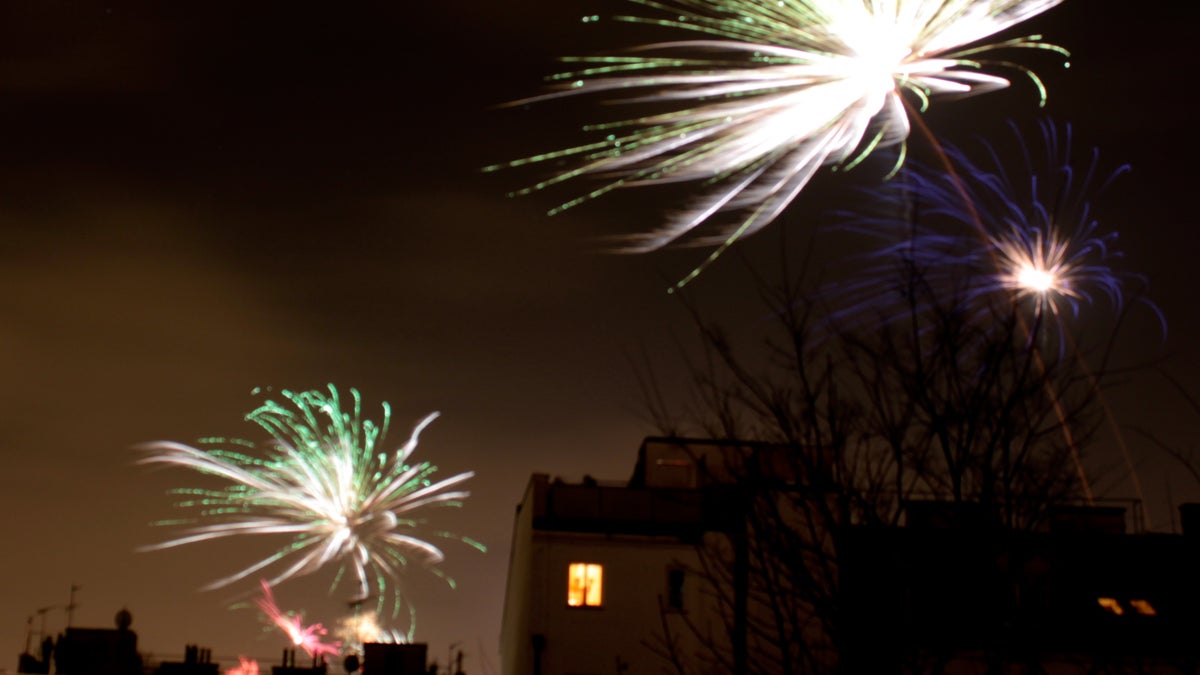A reformed fireworks enthusiast now stays inside on the Fourth
Listen 5:10 Photo via flickr)" title="fireworks-3" width="1" height="1"/>
Photo via flickr)" title="fireworks-3" width="1" height="1"/>
A backyard fireworks display. (Photo via flickr)
Each year, a Missouri man created a bigger and more explosive pyrotechnics display — until the summer an ATF agent showed up at his door.
As a criminal defense attorney in Kansas City, Missouri, John Humphrey wasn’t used to being on the wrong side of the law. But that all changed in 2003, when his Fourth of July fireworks display turned his neighbors from spectators into witnesses and put him at the center of a federal terrorism investigation.
As a kid, Humphrey had always loved fireworks. His parents, though, were less enthusiastic about things that go boom. They only bought sparklers and black snake fireworks, the kind that puff and spew smoke without really emitting any sparks or flares.
Back then, Humphrey’s best chance for scoring exciting stuff was scavenging the fields around his home for undetonated explosives after the July Fourth holiday.
Then Humphrey grew up and started supporting his own pyrotechnics habit. Soon after he and his wife moved to a new home, they started hosting the neighborhood fireworks display.
At first, Humphrey just used consumer fireworks. (In Missouri, that’s the kind you can buy in a tent on the side of the highway.) But he wanted more firepower. A friend of a friend gave him access to M-80 explosives, which are illegal. He also soon acquired commercial-grade fireworks, the kind you see at a baseball game.
From there the John Humphrey Fireworks Show took off.
On July 4, 2003, neighbors on Humphrey’s block gathered for another dazzling, noisy display. He launched the first round, and embers fell to the ground, igniting a second round that was not yet ready for detonation.
That had never happened before, and Humphrey now thinks that one of his assistants incorrectly loaded a mortar — a device that fires projectiles. The mortars on the ground started discharging in all directions. Neighbors and family dove for cover as firework shells whizzed over their heads.
The destructive aftermath of the fireworks-show-gone-wrong was extensive. The accident blew a hole in Humphrey’s own house, and the fireworks show set two of his neighbors’ homes on fire.
No one was seriously hurt, but Humphrey’s niece was hit in the knee. As a precaution, her mother took her to the emergency room, which triggered a newly-enacted provision of a federal anti-terrorism law. Humphrey became the first person ever investigated under the domestic explosives rule.
One afternoon he was taking a nap. “My wife came up and said ‘Wake up, wake up! There’s two ATF agents at the door,'” he remembers.
Humphrey, with some needling from his wife, cooperated with federal officials who wanted to know where he had obtained his illegal fireworks.
“She said, ‘You know what, I know where you got them and I’ll tell them. I am not going to visit your ass in Leavenworth with three little kids,'” he recalls.
Humphrey avoided prosecution, but his supplier went to trial, where a jury eventually acquitted him of the charges.
Humphrey was left with a lesson he lives by to this day: leave the fireworks to the professionals.
“The Fourth of July I stay inside,” he says. But, “I still put on the coolest Halloween in the world. You can ask my neighbors.”
WHYY is your source for fact-based, in-depth journalism and information. As a nonprofit organization, we rely on financial support from readers like you. Please give today.






